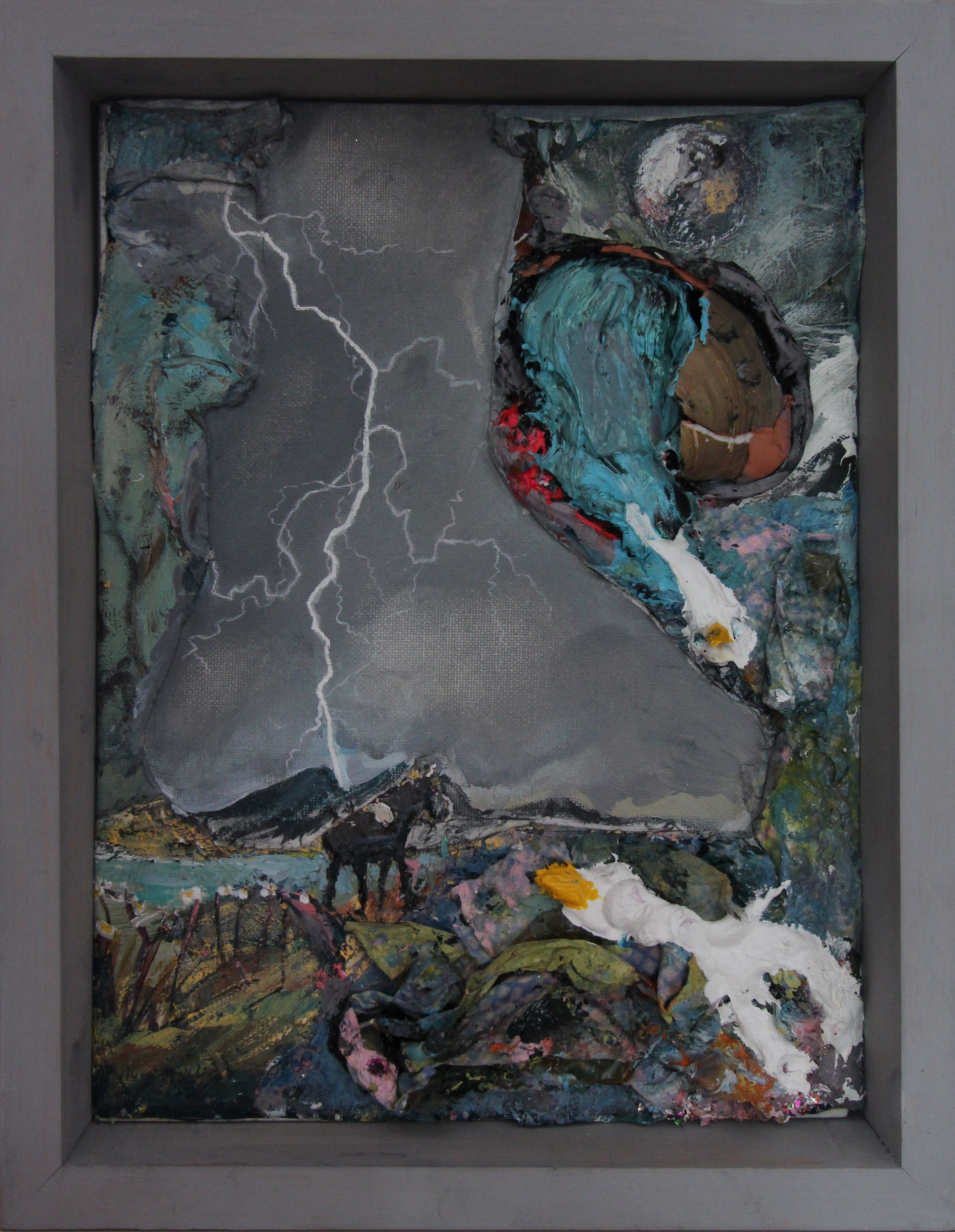
Paul Newman’s Devil’s Island (2017). The work depicts the moment a lightning bolt strikes an island, appearing to send cracks through the grey brooding sky. A startled duck flies out from the undergrowth, shocked by the sudden clap of thunder that can almost be heard whilst looking at the bright electric tendrils reaching to the ground. The duck is white, and stands out against the dark earthy greens, mirroring the white thunderbolt against the gloomy clouds. However, while the bolt of lightning is painted precisely, the frightened duck is rendered with thick globs, which almost dissolve into a confusing tapestry of semi-mixed slabs of paint pressed onto approximately half of the canvas. The juncture between the flatly painted sky and the raised lumps of paint is remarkably abrupt, seeming as though a thick painterly curtain has been pulled partially across the scene. A kind of shedding is at play: the flash of lightning that startles, yet illuminates, the panic and confusion that obscures, and then gives way. The effect is disturbing. The physical locus of crisis, the lightning bolt, appears cool, crystal clear, objective, and unyielding. However, the swirl of expressive, confused, almost angry painterly gunk that frames the central event is perhaps even more full of pain and violence. There is a disjunct, compounded by the different paint applications: the dissonance between the actual and the perceived, and the bewildering momentary confusion of crisis.
Ruth Smith, March 2020.

